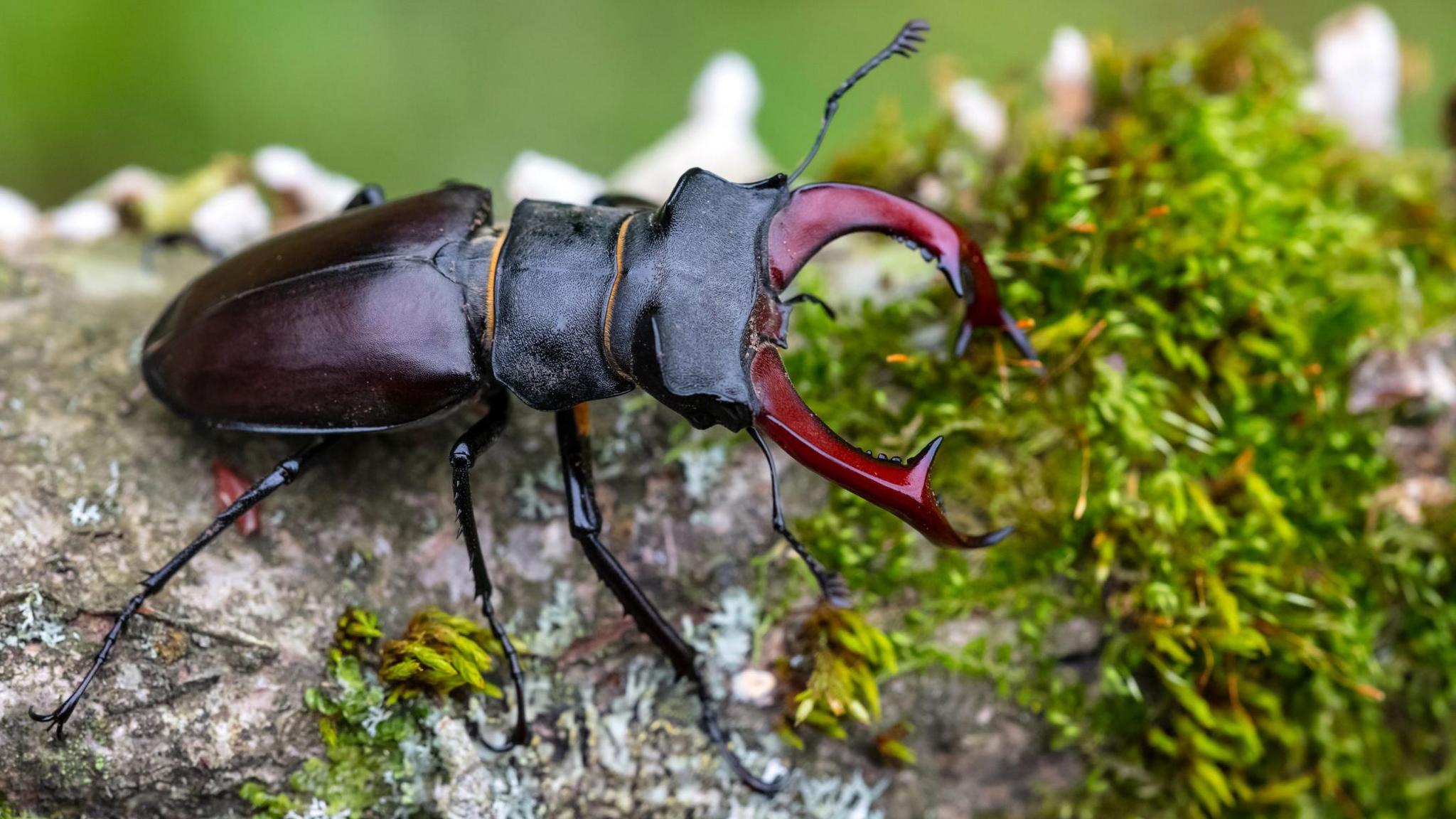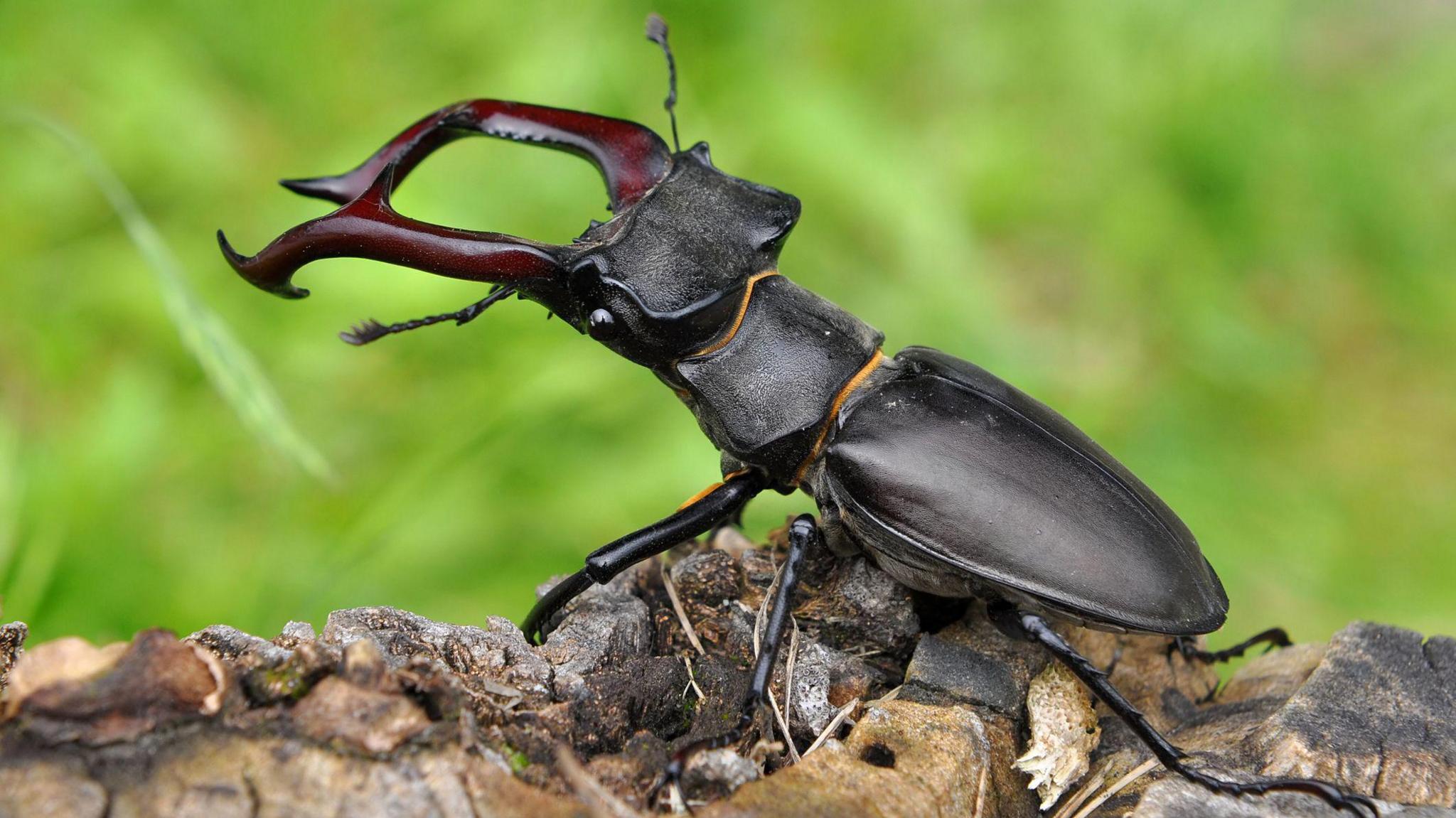London Wildlife Trust launches stag beetle count

Male stag beetles are known for their distinctive antler-like jaws
- Published
Stag beetle researchers have called on people across London to record any sightings to help track the insect's whereabouts and numbers.
Britain's largest beetle species has been in "steep decline" across much of Europe but the capital remains a "hotspot", according to the London Wildlife Trust.
The beetle, whose males have distinctive antler-like jaws, are most commonly found in west and south-west London's parks and woodlands.
North and east London has seen fewer recorded sightings over the years, which the trust says remains unexplained.
How to spot a stag beetle

Stag beetles are 5-8cm long
Male stag beetles have large, antler-shaped jaws
Males often fly in the evening, before dusk, during summer
Female stag beetles lack antlers, have smaller but more powerful jaws and are usually seen on the ground
Adults emerge from soil under logs or stumps from mid-May to late July
Stag beetles are found near dead wood, spending most of their lives as larvae in tree stumps and logs, growing for 4-7 years
The trust is asking people to report any sightings here., external
Epping Forest, Richmond Park, and Wimbledon & Putney Commons are designated European Special Areas for Conservation partly for stag beetles, a London Wildlife Trust spokesperson said.
"Stag beetle season" began and lasts until late July, they said.
"The males fly clumsily with a faint clattering whirr, and are most likely to be seen on sultry summer evenings an hour or two before dusk."
A trust spokesperson said the species was "globally threatened" and the count would help better map the beetles' presence in London.
- Published27 June 2015
- Published27 March 2014
Listen to the best of BBC Radio London on Sounds and follow BBC London on Facebook, external, X, external and Instagram, external. Send your story ideas to hello.bbclondon@bbc.co.uk, external